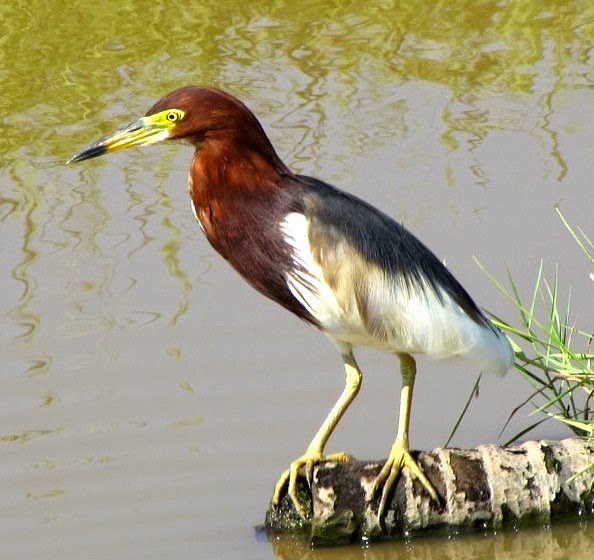 |
| Photo by Foozi Saad (Trek Nature) |
Common name:
Chinese pond-heron (en); papa-ratos-da-China (pt); crabier chinois (fr); garcilla china (es); Bacchusreiher (de)
Taxonomy:
Order Ciconiiformes
Family Ardeidae
Range:
This species breeds throughout the eastern half of China, as well as in Korea, Japan, Taiwan and marginally into extreme south-eastern Russia. They migrate south to winter from southern China south to the Philippines and northern Indonesia.
Size:
These birds are 42-52 cm long and have a wingspan of 79-90 cm. They weigh about 370 g.
Habitat:
The Chinese pond-heron is found in a wide range of wetland habitats, including rice fields, swamps and marshes, freshwater lakes, river banks, saltmarshes and mangroves, also using dry grasslands.
Diet:
They feed on small frogs, fishes, worms, snails, both aquatic and terrestrial insects, crabs and even small birds.
Breeding:
Chinese pond-herons breed in April-August. They nest in small colonies, sometimes with other herons species, each pair building a large bowl made of small twigs and lined with grasses and leaves, fairly high up in a tree. There the female lays 4-5 blue green eggs which are incubated by both parents for 18-22 days. The chicks fledge about 30 days after hatching. Each pair usually raises 2 broods per season.
Conservation:
IUCN status – LC (Least Concern)
This species has a very large breeding range and the global population is very roughly estimated at 25.000-1.000.000 individuals. The population is suspected to be stable in the absence of evidence for any declines or substantial threats.







